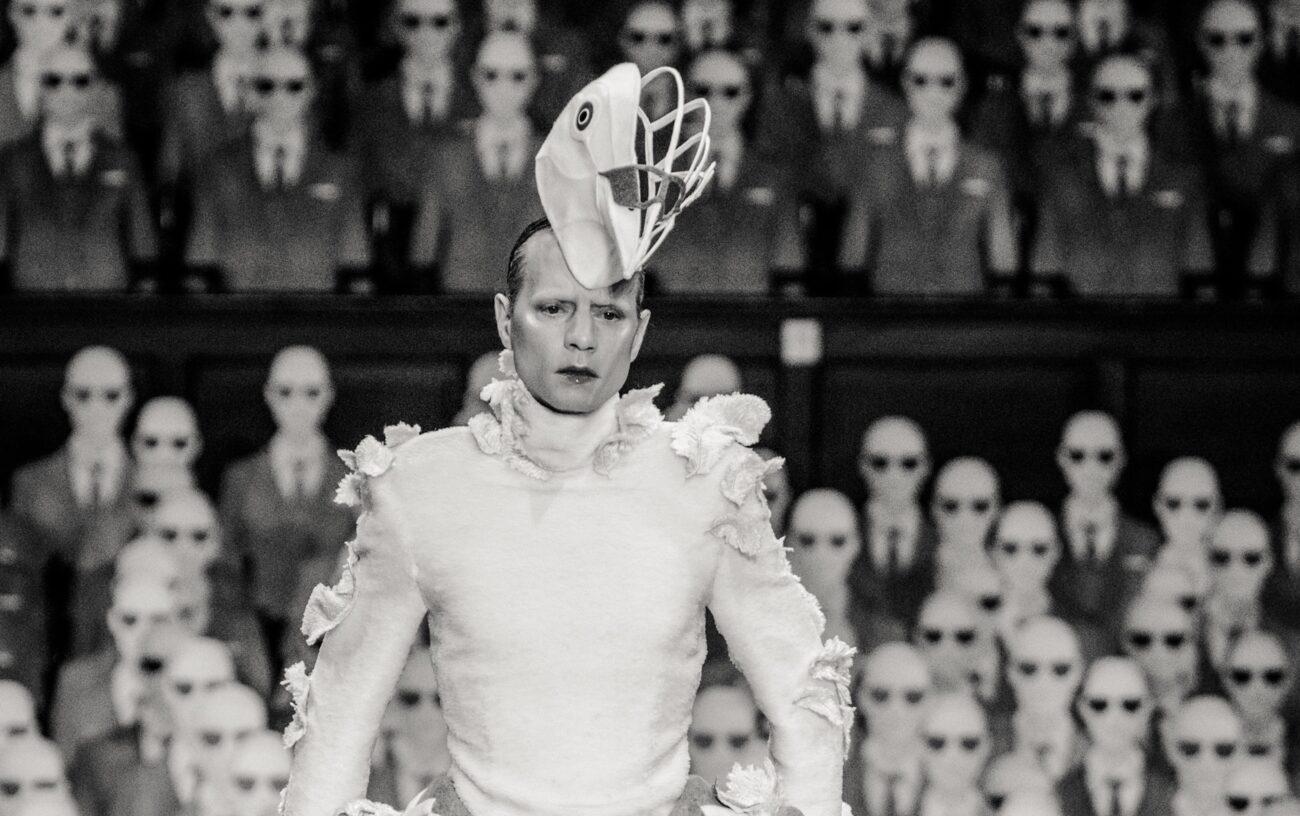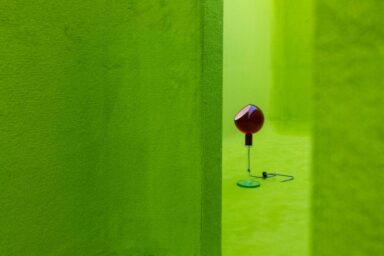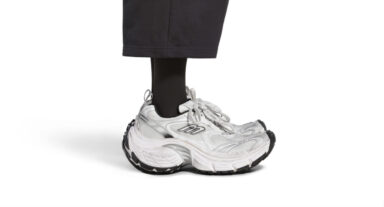A divided Paris: on one side, the unrestrained luxury of Fashion Week’s catwalks; on the other, violent clashes over the death of a young man at the hands of a police officer. It’s not a dystopian novel, but reality. The city presents a serene façade of fashion, with trends of quiet luxury, new masculine forms, and eccentric couture. The industry, though connected to the surrounding reality, doesn’t come to an abrupt halt. Yet, it’s understandable that some raise an eyebrow at the narrative of luxury without awareness of the context, but Paris, amidst Fashion Week and protests: the ethically dramatic aftermath of “the show must go on”
A divided Paris: on one side, the unrestrained luxury of Fashion Week’s catwalks; on the other, violent clashes over the death of a young man at the hands of a police officer. It’s not a dystopian novel, but reality. The city presents a serene façade of fashion, with trends of quiet luxury, new masculine forms, and eccentric couture. The industry, though connected to the surrounding reality, doesn’t come to an abrupt halt. Yet, it’s understandable that some raise an eyebrow at the narrative of luxury without awareness of the context.
The Alaïa show began with a touching personal message from Pieter Mulier, the Belgian creative director. The message, shared via WhatsApp, invited everyone to gather on the Passerelle Léopold-Sédar-Senghor footbridge, just before sunset, where beauty unfolds in the city, and colors seem to expand infinitely. Mulier’s message alluded to the show’s location, which spanned from the 1st arrondissement to the 7th, crossing the Seine.
The collection delved into the concept of temporality, as expressed in the accompanying show notes, which contemplated the notions of time—giving time, taking time, less time, and timelessness. Mulier infused the collection with sensuality, an element that has come to define his tenure at Alaïa. The 1940s-inspired silhouettes, including prim high-waist pencil skirts, buttoned-up dresses, and belted trench coats, were reimagined in semi-sheer latex. Accessories played a significant role, featuring pillbox hats, wide waist-cinching belts, leather gloves, and handbags held close to the chest. The show showcased the remarkable craftsmanship of the Alaïa atelier, with astounding silhouettes that paid homage to the house’s founder. Body-contouring semi-sheer gowns revealed corsetry beneath, playing with the idea of the “bombshell” silhouette. The collection’s final looks featured diaphanous fabrics with intricate folds emerging from the cuff or hip. The house expressed that the show took place on a bridge, symbolizing the connection between Maison Alaïa’s origins and its present, with figures crossing in perpetual motion. Against the backdrop of a ticking clock, the eternal sound of time, the march of life unfolded.
The Alaïa show evoked a sense of emotion and reflected on the passage of time, while celebrating the maison’s heritage and Mulier’s contemporary vision.
Alaïa
Daniel Roseberry drew inspiration from the art world for his latest Schiaparelli haute couture collection, infusing each look with the influence of various artists spanning from the 1920s to the present day. The designer aimed to create an “impossible wardrobe,” not because it was unwearable, but because it was extraordinarily exceptional—a surreal interpretation of a woman’s essential closet. The collection exuded a sense of freedom and disobedience, taking inspiration from artists such as Salvador Dalí, Lucian Freud, Henri Matisse, and Sarah Lucas.
The collection embraced a liberated and eclectic feel, with looks that were created instinctively just days before the show, deviating from the meticulous planning that characterized previous seasons. Collars expanded into mesmerizing sculptural forms, garments were adorned with trinkets or shards of broken mirrors, and gowns boasted enormous, duvet-like proportions. Notably, one gown was composed of a mosaic of 12,000 hand-painted leather rectangles. Blue paint sprayed across models’ necks or across their faces paid homage to the work of Yves Klein.
In contemplating the power of creative expression and fame in an era where they seem accessible to all, even if momentarily, Roseberry pondered what can truly make an impact. He expressed that for Schiaparelli, it is the power of design, the expertise of their artisans, and the irreplaceable craftsmanship of the human hand at work. The collection celebrated the fusion of art and fashion, pushing boundaries and embracing the extraordinary in a bold and captivating manner.
SCHIAPARELLI
Maria Grazia Chiuri‘s latest collection, surrounded by a set designed by Italian artist Marta Roberti, paid homage to goddesses and the divine feminine. The collection seamlessly bridged the gap between the past and present, exploring the intricate relationship between couture and the human body. In the accompanying notes, Chiuri stated, “Couture evolves according to a liturgical rhythm, where the past is integrated into every beat of the present.” She emphasized the atelier’s process of transforming sketched forms into dresses that embrace the unique contours of each individual’s body, eliminating the need for paper patterns.
The serene color palette of white, beige, silver, and gold exuded a sense of tranquility, contributing to the collection’s near-ecclesiastical beauty. Jackets were pleated to evoke classical statues and the fluting of columns, while gowns and overcoats featured caped overlays. The opulence of Dior’s historic haute couture atelier shone through, with delicate pearls, rich brocades, tassels, and shimmering embroidered flowers adorning the designs. The collection captured a sense of refined elegance, drawing inspiration from both the timeless allure of the past and the modern interpretation of couture. Maria Grazia Chiuri’s exploration of the interplay between couture and the human form resulted in a collection that celebrated individuality and showcased the artistry of the Dior atelier.
CHRISTIAN DIOR
As part of the week’s events, Thom Browne hosted his first-ever haute couture show at the iconic Palais Garnier in Paris to commemorate the 20th anniversary of his eponymous brand. The choice of venue was a natural fit for the American designer, as his ready-to-wear runway shows, presented in both New York and Paris, have consistently showcased a theatrical flair reminiscent of haute couture. Browne’s designs are known for their intricate construction, often taking classic tailoring and transforming it into bold new forms.
The guests entered through the backstage area of the Palais Garnier and took their seats on the theater’s stage. As the curtain rose, an auditorium filled with cardboard cutouts dressed in Browne’s signature grey suit and sunglasses was revealed—a temporary installation for the night. Browne described the collection as “for one night only,” riffing on the preppy American uniform through the lens of haute couture.
Striped ties and grey suiting, reminiscent of collegiate uniforms, were reimagined as trompe l’oeil designs on wide-sleeved gowns, while form-fitting knee-length latex socks evoked American sportswear. The collection also featured layers of taffeta, intricate nautical embroidery, and a stunning bridal look, paying homage to the abundance and craftsmanship of historical haute couture.
Browne explained that he envisioned a traveler sitting in a station, observing the world pass by. This concept inspired the inclusion of pebbled leather luggage, weekend bags, and an enlarged version of Browne’s dog-shaped Hector bag as accessories to complete the looks. The show beautifully captured the essence of Browne’s imaginative vision, merging elements of haute couture and his distinctive design aesthetic.
THOM BROWNE
Virginie Viard presented a Chanel haute couture collection along the banks of the River Seine, capturing what she described as a “portrait of a sensitive yet bold Parisienne.” Embracing the essence of Paris itself, Viard explained that the street setting and vibrant cobblestones called for a harmonious blend of sophistication and simplicity.
The collection revolved around the juxtaposition of contrasts—sensitivity with boldness, sophistication with simplicity—which Viard believed encapsulated the enduring allure of Parisian women and their distinctive fashion codes. She emphasized the interplay of opposites, contrasts, nonchalance, and elegance as essential elements, referring to it as the “allure” that defines Chanel. Musician Vanessa Paradis served as the muse for the season, envisioned in elongated tweed overcoats with a masculine cut, paired with narrow pinstripe trousers and two-tone Mary Jane shoes. Contrasting femininity emerged through organza and lace dresses adorned with strawberries and blackberries, ruffled blouses, and baskets filled with fresh flowers. Viard concluded by highlighting the importance of evoking emotions, bringing together unexpected elements, and following one’s unique vision—ultimately, the art of dreaming. The collection celebrated the multifaceted nature of the Parisian woman, capturing her sensitivity, boldness, and ability to effortlessly merge strength with delicacy, all under the timeless allure of Chanel.
CHANEL
Giorgio Armani described his latest Privé collection, the haute couture division of the Italian house, as “a carnal, seductive, mysterious bloom of red roses.” This captivating flower motif adorned the collection in various forms, including delicate corsages, rose-red embroidery, and a stunning cape made of red organza blooms. The rose, symbolizing sensuality and femininity, was intricately woven throughout the designs, whether showcased in diaphanous tailoring, elongated gowns, or layers of translucent fabrics.
Armani also drew inspiration from a journey “from west to east,” reflecting his Emporio Armani menswear collection presented in Milan the previous month. Notably, he found inspiration in the era when Art Deco thrived in China and Japan during the 1920s and 1930s. This influence was evident in the closing looks of the collection, featuring shimmering crystal pieces adorned with pagodas, blossoms, and kabuki-style masks, evoking the aesthetics of that time. The collection merged the allure of the red rose with the visual splendor of Art Deco, creating a mesmerizing blend of sensuality, femininity, and cultural influences from the East. Giorgio Armani’s Privé collection continued to captivate with its exquisite craftsmanship and evocative designs.
GIORGIO ARMANI
Described as ‘a tribute to pursuing perfection,’ Balenciaga unveiled Demna’s latest haute couture collection at the historic salons of 10 Avenue George V. The collection’s theme was set by a unique AI-generated rework of an a cappella recording of Maria Callas by musician BFRND, which Demna referred to as ‘sonic couture.’ The show seamlessly blended nostalgic glamour with futuristic techniques and a keen focus on silhouettes. The opening look paid homage to a Cristóbal Balenciaga original design, worn by the couturier’s preferred model, Danielle Slavik, in the late 1960s. This black gown featured velvet flowers and an integrated pearl necklace, symbolizing a connection between the past and the present.
Subversion remained a central element of the collection. Upside-down sculptural tailoring created V-neck necklines that resembled the hemlines of archival Balenciaga jackets, while men’s blazers, seemingly crafted from Prince of Wales check wool, were actually made from Japanese denim. Trompe l’oeil linen garments were meticulously hand-painted to mimic fur or snakeskin, with each stroke of oil paint taking up to 280 hours to apply. The show concluded with an array of extraordinary eveningwear, featuring notable figures like actress Isabelle Huppert in a dramatic black gown adorned with shimmering paillettes, Eva Herzigova in a sculpted bustier dress embellished with 10,000 individually applied crystals, and artist and muse Eliza Douglas in a gown that resembled a suit of armor. Demna described this creation as his “armour,” as it was CAD-designed, 3D printed, and polished with chrome—a stunning showcase of the limitless possibilities of modern haute couture.
BALENCIAGA
The Château de Chantilly opens its doors to welcome the creations of Pierpaolo Piccioli, the creative director of Valentino, who, for the Autumn-Winter 2023/2024 season, wanted to present a haute couture collection with a dual identity.
On one hand, the collection “Un Château” equips itself with everything needed for impeccable haute couture, allowing magnificent garments to grace the runway. These garments bloom with soft petals, draped in ethereal folds that give them an airy appearance. However, in a moment of distraction, one may find themselves face-to-face with simple and essential looks, featuring jeans, white shirts, or long, fundamentally understated coats, revealing bare chests of the models for a glimpse of the seen-unseen effect. At the core of the collection lies a quote by Constantin Brancusi, the iconic twentieth-century sculptor: “Simplicity and resolved complexity.”
“No princesses, no princes, no courtiers: my work in this collection aims to change that representation and steer it towards the idea of community,” added Pierpaolo Piccioli. It is a castle without aristocracy, where haute couture can coexist with a pair of jeans.



